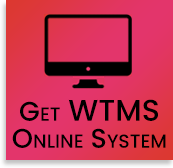
VISUALITY AT WORK: A MORE COMPLETE DESCRIPTION
In a visual workplace, information is converted into simple, universally understood visual devices and installed in the process of work itself, as close to the point of use as possible. The result is the transformation of a formerly mute work environment into one that speaks, eloquently and precisely, about how to use it effectively and efficiently.
The most complete example of this outside the workplace is our system of roads and highways. In the USA alone, 150 million cars are on the road every day—150 million killing machines. And yet relatively few people die, proportionally only the tiniest fraction of the sum, thanks to visual information sharing. ![]()
The vast array of visual devices that populate our roads and highways makes it possible for drivers everywhere to get precisely where they want to go, safely, and on time—day after day, week after week, year after year. Those devices include (but are by no means limited to): exit and speed signs, speed bumps, white lines marking the sides of road, other white lines that guide us through a sharp turn to the left or right, center yellow lines—dashed and solid. This is the language of driver safety imbedded into the roadway itself and the operational language of a large portion of our national economy. That economy would collapse without roads and highways that speak.
You have only to erase these roadway visual devices in your mind’s eye to instantly understand their power and feel appreciation for their functionality. Yes, visuality takes the struggle out of our everyday life. Why not also at work?
Workplace information can change quickly and often—production schedules, customer requirements, engineering specifications, operational methods, tooling and fixtures, material procurement, work-in-process, and the thousand other details on which the daily life of the enterprise depends. In any single day, literally hundreds of precise data points (information) are required to keep work going. And these data points can and often do change dozens of times every shift, with multiples that are enormous.
![]() In the pre-visual workplace, everything and everyone is forced to exist within a narrow definition of their capability. The physical work environment is devoid of definition or conveyed context. It is devoid of meaning. Attempts to improve the process of work invariably fail because even the smallest gains disappear overnight. A pre-visual workplace has no means to sustain them, however hard-won. This is equally true of lean gains.
In the pre-visual workplace, everything and everyone is forced to exist within a narrow definition of their capability. The physical work environment is devoid of definition or conveyed context. It is devoid of meaning. Attempts to improve the process of work invariably fail because even the smallest gains disappear overnight. A pre-visual workplace has no means to sustain them, however hard-won. This is equally true of lean gains.
Workplace visuality (including its subset, visual management) is a strategy for translating the thousands of informational transactions that transpire every day in the life of the enterprise into visible meaning. This visible meaning doesn’t just impact performance; it creates performance. In this way, the visual workplace is a gigantic adherence mechanism that ensures that what is supposed to happen does happen—on time, every time, day or night—because of visual devices and visual mini-systems. This makes visuality mission-critical to spreading and sustaining lean gains.
The effective implementation of visuality in a company can create—and repeatedly has created—dramatic improvements to the bottom line, including a documented 15% to 30% increase in productivity. But the liberation of information has a further and nearly incalculable positive impact—this time on a company’s work culture. The liberation of information is the liberation of the human will.
Let the workplace speak!




